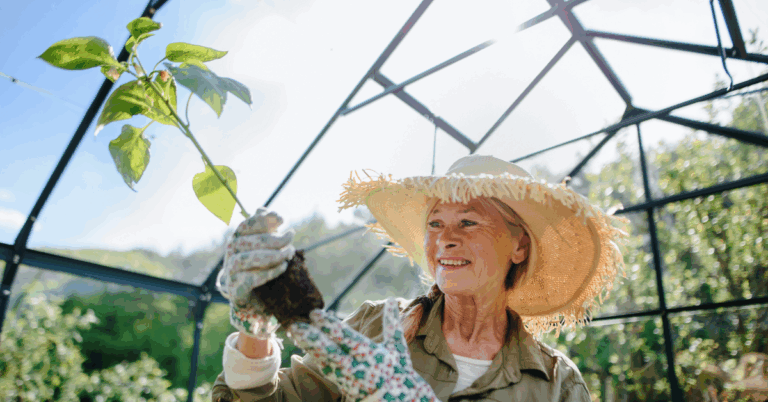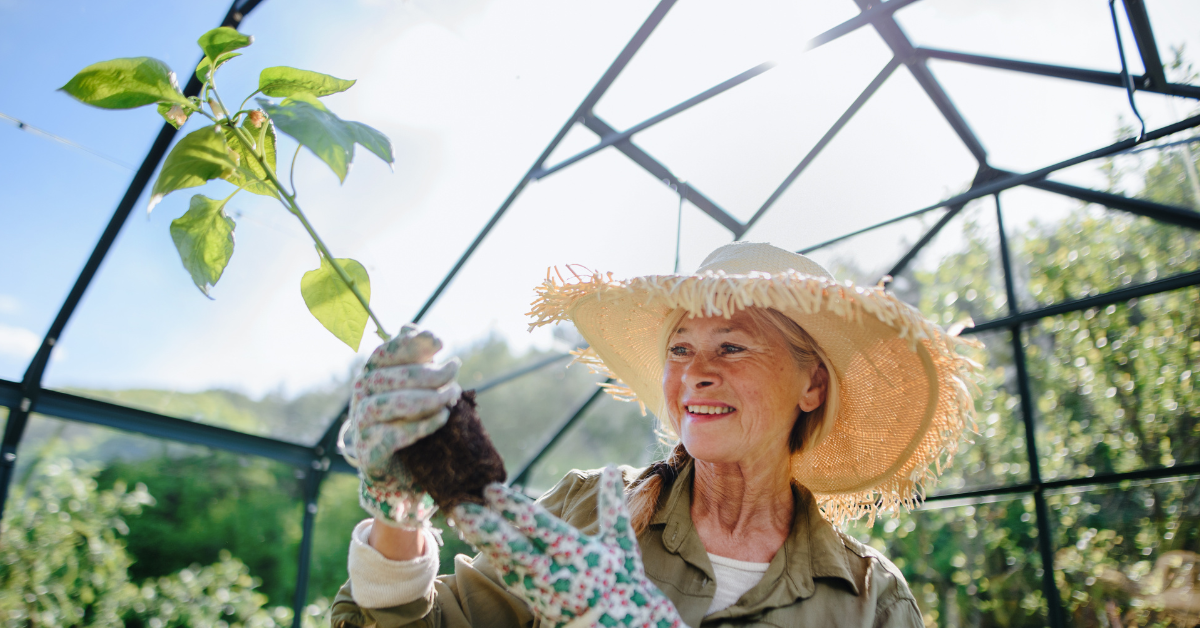Pricing & Availability: 586-838-5900

Your summer garden holds stories worth telling. Each tomato you picked, every flower that bloomed and all those quiet moments spent among your plants created something meaningful—benefits that reach far beyond what meets the eye.
Gardening brings real rewards to seniors in assisted living. Those thirty minutes you spent tending your plants weren’t just peaceful—they burned between 125 and 300 calories while strengthening your hands and improving dexterity. Your mind benefited too. Every decision about where to plant, when to water and how to solve garden challenges kept your brain engaged and sharp. The stress that seemed to melt away during those garden hours? That’s a real physiological response that improves your mood and overall well-being. Whether you’ve gardened for decades or discovered this passion recently, your summer experiences deserve recognition and reflection.
Looking Back: What Summer Gardening Taught Us
Noticing changes in plant growth and yield
Maybe you saw:
- Corn and tomato leaves curling or cupping to protect themselves
- Peppers, squash and cucumbers dropping their blossoms or young fruit
- Spinach and lettuce bolting to seed earlier than expected
Those oddly shaped vegetables or disappointing yields often point to pollination struggles. Bees become less active when temperatures exceed 90°F, which particularly affects crops like cucumbers with their small, less attractive flowers. Understanding this connection helps explain why some harvests fell short of expectations.
How weather patterns affected your garden
The weather shaped every aspect of your garden’s performance this summer. Heat waves, strong winds, unexpected hail and erratic rainfall all left their mark on your plants. Trees and shrubs felt the pressure most intensely—you might have noticed dying branches in the upper canopy of maples during the hottest, driest periods.
Water became the most critical factor during those scorching days. Since plants contain about 90% water, consistent moisture wasn’t just helpful—it was essential for survival. Those triple-digit days when you wondered if you could skip watering? Your plants couldn’t afford that gamble. Shallow-rooted plants especially depended on you during these challenging times.
What worked well and what didn’t
The gardening practices that brought success likely centered on fundamentals: watering deeply but less frequently instead of daily light sprinkling, using mulch to help soil retain moisture and timing your harvests just right. Sweet corn taught this lesson perfectly—once the silk turns brown, you have just three days before those sugars turn to starch. Perhaps the most important lesson came from learning to work with your garden rather than against it.
Lessons to Carry into the Next Season
Autumn’s arrival brings the perfect moment to turn your summer discoveries into next year’s garden plan. The insights you’ve gained aren’t just memories—they’re blueprints for creating an even more rewarding gardening experience.
Choosing better plants for your space
Your garden’s personality—its soil quirks, sun patterns and moisture habits—determines which plants will flourish with minimal fuss. Plants that match their environment establish faster, grow stronger roots and handle challenges better. Take an honest inventory of this year’s struggles. That perennial that never quite looked happy? It might simply need a different spot rather than different care.
Adjusting your watering and feeding schedule
Deep, thorough watering builds stronger root systems than frequent light sprinklings. Morning watering works best—it gives plants what they need for the day ahead while allowing leaves to dry before evening, reducing disease problems. Here’s a simple test: grab a handful of soil and squeeze it. If it holds together in a ball, your plants have adequate moisture. This hands-on approach often works better than any schedule.
Using raised beds and ergonomic tools
Raised beds solve many challenges for senior gardeners. They ease back strain, drain better, discourage pests and warm up faster in spring. You can even elevate them with blocks or bricks to reduce bending. Quality tools matter too. Ergonomic designs with cushioned handles, rotating grips and lighter materials prevent common injuries like tendonitis.
Involving others in your gardening journey
Shared gardening creates richer experiences. A family garden journal documenting projects together, tracking growth and noting bloom dates becomes a treasured keepsake. These shared moments often matter more than the harvest itself.
Documenting your garden for future planning
Your garden journal becomes your most valuable tool. Record what you planted, what succeeded, what failed and why. These notes help with crop rotation, timing and variety selection. Most importantly, these records guide future decisions.
The Roadmap Ahead
The lessons you’ve gathered will serve you well. Some seasons will surprise you with abundance, others will test your patience. Both teach valuable things about resilience, adaptation and finding beauty in unexpected places. Your garden journal, filled with notes about successes and challenges, becomes a roadmap for future adventures.
Connection makes gardening even more meaningful. Whether you’re sharing extra zucchini with neighbors or working alongside fellow gardeners, these relationships enrich the entire experience. For seniors in assisted living, gardening offers this kind of purposeful community engagement. Contact us at (586) 838-5900 to explore other activities in My Doctors Inn, our senior living in Sterling Heights, MI.
FAQs
Q1. What are the health benefits of gardening for seniors?
Gardening provides excellent low-impact exercise, improving strength, flexibility and mobility. It also reduces stress, enhances mental clarity and can lower the risk of conditions like depression and dementia. Additionally, it offers opportunities for social interaction and cognitive stimulation.
Q2. How can I prepare my garden for the fall season?
Start by gradually removing summer crops and reconditioning the soil. Plant fall crops in stages, allowing for successive harvests. Consider using cover crops in some beds to improve soil health. Don’t forget to document your garden’s performance to help plan for next year.






